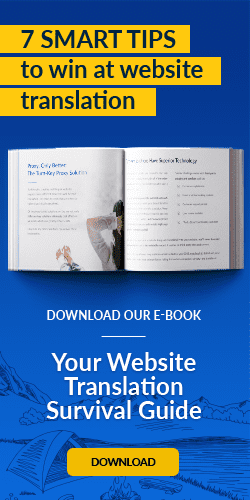“Brexit means Brexit.”
So sayeth Theresa May, who was recently confirmed as Britain's 56th Prime Minister. It's clear May and her political allies will move forward with activating Article 50, which will formally trigger the UK's two-year-long divorce process with the European Union. However, it remains quite unclear what the UK / EU post-Brexit relationship will look like in 2018.
One thing is all but certain: if the UK and EU don’t reach a free trade agreement, the dominant influence of the UK’s e-commerce sector on the European continent will wane. Currently, European markets represent more then 50% of UK e-retailer exports. More significantly, these comprise one-fifth of the UK’s online retail economy—or more than 6% of the UK’s GDP.
In this scenario, consumers on the European continent simply won’t spend as much on UK e-commerce sites, due to tariffs and customs fees. Cross-border sales will be pricier and more complicated. This will likely put a dent in the UK’s current standing as the world’s third-largest e-commerce market, and its projected global e-commerce share of nearly 20% by 2019.
It will also likely impact over 3 million UK jobs linked to exporting products to the EU.
As we’ve previously reported, this is bad news for UK e-retailers. But it’s a glowing opportunity for retailers in the EU.
Don’t Mind the Gap—Fill It
If European customers avoid pricier post-Brexit UK products, a hearty chunk of the UK’s €174 billion ($191.5 billion) B2C e-commerce market may be up for grabs. Savvy continental retailers can pull up the slack by courting regional consumers with e-commerce sites, published in those customers’ languages of choice.
As one Berlin-based CEO recently wrote: “For e-retailers, that is only a bit of translation and click away” to win the wallets of online consumers in the EU.
And there’s plenty to win. European e-shoppers spent an average of €1,540 online last year. Currently, more than 65 million Europeans buy online from other EU countries. But the potential EU market, a Swiss e-commerce association reports, is much larger: around 685 million people.
Indeed, as one Fortune contributor wrote last month, “The European Union will probably be the biggest winner” in the days following Brexit.
"Finally, Germany and France can move forward in their long-standing goal to create a unified world power-one that can stand up to the U.S., China, and Russia," the contributor wrote. "A common foreign policy, a common central bank, a common defense network, and a common fiscal policy are finally back on the table with the UK out of the picture."
Tips to Engage Continental E-Customers
So what’s the smartest way for EU-based retailers to prepare for a post-Brexit e-commerce landscape? If they haven’t already, launching e-commerce experiences in multiple languages is critical. There’s no more immediate or authentic way to build consumer trust and streamline the transactional experience.
Accommodating locally-preferred payment methods on these sites is important, too. Europeans’ buying habits are different from market to market, as are their preferred payment platforms.
One of our retail clients launched an e-commerce site to serve the Netherlands. The translated site was performing adequately, but when we integrated support for the locally-popular iDeal e-wallet platform, sales surged. We quickly saw iDeal's share of revenue rise to over 275% of what credit card-based payments were generating.
The takeaway: Dutch consumers were visiting the site, but weren’t ready to take the plunge and buy products until the site offered their preferred payment method.
And whenever possible, companies should transcend conventional content translation and leverage the power of localization—content with verbiage and verve that’s designed to resonate with consumers in specific markets.
This approach provides a sense of authenticity that really generates results. It can be used for Conversion Rate Optimization (CRO), to offer local promotions, build brand trust, and much more. Companies that localizations in these ways achieve an average 50% increase in conversion rates, we've found.
* * *
Read more of our Brexit coverage:
Will the ‘Brexit’ Bruise UK E-Commerce?
‘Brexit’ Upside: Short-Term Gains Await UK Manufacturers
Last updated on July 20, 2016
